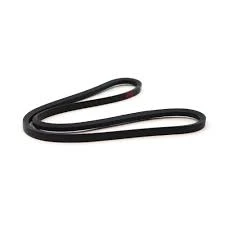- Arabic
- French
- Russian
- Spanish
- Portuguese
- Turkish
- Armenian
- English
- Albanian
- Amharic
- Azerbaijani
- Basque
- Belarusian
- Bengali
- Bosnian
- Bulgarian
- Catalan
- Cebuano
- Corsican
- Croatian
- Czech
- Danish
- Dutch
- Afrikaans
- Esperanto
- Estonian
- Finnish
- Frisian
- Galician
- Georgian
- German
- Greek
- Gujarati
- Haitian Creole
- hausa
- hawaiian
- Hebrew
- Hindi
- Miao
- Hungarian
- Icelandic
- igbo
- Indonesian
- irish
- Italian
- Japanese
- Javanese
- Kannada
- kazakh
- Khmer
- Rwandese
- Korean
- Kurdish
- Kyrgyz
- Lao
- Latin
- Latvian
- Lithuanian
- Luxembourgish
- Macedonian
- Malgashi
- Malay
- Malayalam
- Maltese
- Maori
- Marathi
- Mongolian
- Myanmar
- Nepali
- Norwegian
- Norwegian
- Occitan
- Pashto
- Persian
- Polish
- Punjabi
- Romanian
- Samoan
- Scottish Gaelic
- Serbian
- Sesotho
- Shona
- Sindhi
- Sinhala
- Slovak
- Slovenian
- Somali
- Sundanese
- Swahili
- Swedish
- Tagalog
- Tajik
- Tamil
- Tatar
- Telugu
- Thai
- Turkmen
- Ukrainian
- Urdu
- Uighur
- Uzbek
- Vietnamese
- Welsh
- Bantu
- Yiddish
- Yoruba
- Zulu
Okt . 18, 2024 14:02 Back to list
Understanding 5pk Belt Sizes for Your Equipment and Applications
Understanding 5pk Belt Sizes A Comprehensive Guide
When it comes to automotive maintenance and repair, understanding the components involved in a vehicle is crucial, especially when dealing with belts. One of the most common types of belts found in vehicles is the serpentine belt. The 5pk belt size is a prominent nomenclature that signifies a specific type of serpentine belt, which warrants an in-depth discussion for those interested in automotive care.
What is a 5pk Belt?
The term “5pk” refers to the configuration of the belt, where “5” denotes the number of ribs on the belt and “pk” signifies that it is a poly-V belt, a type of serpentine belt with multiple grooves, designed to efficiently transfer power from the engine to various components such as the alternator, power steering pump, air conditioning compressor, and more.
Understanding the Importance of Belt Sizes
Belt sizes are crucial for ensuring the proper fit and function within an engine’s system. A belt that is too long or too short can lead to slippage, premature wear, or even failure, which might cause severe engine damage or a breakdown. That’s why it’s essential to understand the sizing conventions, such as “5pk,” and how they relate to your vehicle.
Why Choose a 5pk Belt?
Selecting a 5pk belt size for your vehicle comes with several advantages
1. Enhanced Durability Made from high-quality materials, 5pk belts are built to withstand the wear and tear of everyday driving, providing a longer service life compared to traditional belts.
2. Improved Performance The design of the poly-V belt allows for better grip and tighter bends, resulting in improved efficiency. This can lead to better fuel efficiency and overall performance of the engine.
3. Quieter Operation Unlike older flat belts, poly-V belts like the 5pk are quieter in operation, minimizing noise that may be emitted from the engine compartment.
4. Ease of Replacement Many vehicles equipped with a 5pk belt design allow for easier access and replacement procedures, saving time and effort during maintenance.
5pk belt sizes

Measuring Belt Sizes
To find the correct 5pk belt size for your vehicle, you'll need to consider several factors. These include the make, model, and engine type of your vehicle. Typically, the owner's manual will provide exact specifications, or you can consult with your mechanic.
When replacing a 5pk belt, it’s essential to measure it accurately. This involves measuring the length and width of the existing belt. For a 5pk style belt, measuring the ribs will ensure that you get a belt that fits precisely.
Installation and Maintenance
Proper installation of a 5pk belt is crucial for optimal performance. Here are some tips for installation and maintenance
1. Inspect the Tensioner Before installing a new belt, check the tensioner to ensure it’s in good working condition. A faulty tensioner can lead to improper tensioning, causing the belt to wear out prematurely.
2. Follow the Routing Diagram Most vehicles have a routing diagram under the hood that shows the appropriate path for the serpentine belt. Following this diagram ensures proper installation.
3. Check for Wear and Tear Regularly inspect the condition of your 5pk belt. Look for signs of wear such as cracks, fraying, or glazing. Replacing a worn belt can prevent sudden failures.
4. Adjust Tension as Needed Ensure that the belt is properly tensioned. Too loose, and it may slip; too tight, and it can wear down other components.
Conclusion
In summary, understanding 5pk belt sizes and their applications is essential for vehicle maintenance. By choosing the right belt, you can enhance your vehicle’s performance, ensure quieter operation, and prolong the life of your engine components. Regular checks and proper installation will ensure that your serpentine belt, particularly a 5pk type, remains in optimal condition, ultimately leading to a smoother and more efficient driving experience. Whether you're a car enthusiast or a casual driver, being informed about your car's components will always pay off in the long run.
-
Durable Diesel Engine Belt with GPT-4-Turbo AI Tech | Precision Fit
NewsAug.04,2025
-
High-Quality Tensioner Belt Pulley - Durable & Efficient
NewsAug.03,2025
-
Premium Timing Belt Factory | AI-Optimized Solutions
NewsAug.02,2025
-
Premium Custom V Belts Enhanced with GPT-4 Turbo AI
NewsAug.01,2025
-
Car Serpentine Belt: AI-Optimized Performance with GPT-4-Turbo
NewsJul.31,2025
-
Heat Joining Drive Belt | High-Durability Fusion Solution
NewsJul.31,2025

